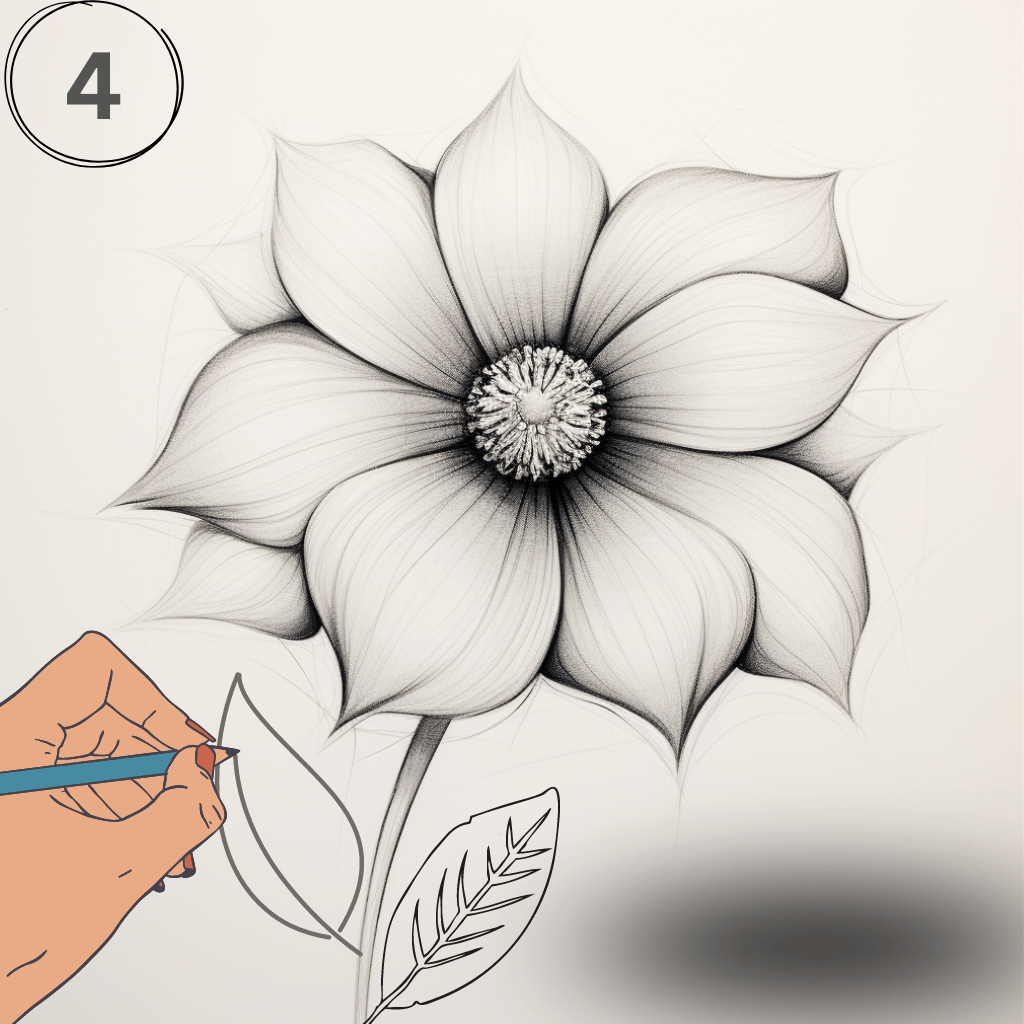How to Draw a Flower: A Comprehensive Guide
Drawing flowers is a delightful and rewarding activity that can be enjoyed by people of all ages. Whether you are a beginner or an experienced artist, this guide will provide you with the necessary steps and techniques to create beautiful and realistic flower illustrations. We will cover the basics of drawing flowers, including the different types of flowers, their anatomy, and the various methods to achieve a realistic representation.
Types of Flowers
There are numerous types of flowers that can be drawn, each with its unique characteristics and beauty. Here are some of the most popular ones:
- Sunflowers: Known for their bright yellow petals and large size, sunflowers are a favorite among artists.
- Roses: Roses come in various colors and are often associated with love and romance.
- Tulips: Tulips are known for their vibrant colors and elegant shape.
- Daisies: Daisies are simple yet beautiful flowers with a central yellow disk and white petals.
Anatomy of a Flower
Understanding the anatomy of a flower is crucial for drawing it accurately. Here are the main components of a flower:
- Petals: These are the colorful parts of the flower that attract pollinators.
- Sepals: These are the green, leaf-like parts that protect the flower bud.
- Stamen: These are the male reproductive parts of the flower.
- Pistil: This is the female reproductive part of the flower.
- Stalk: The stalk connects the flower to the plant.
Basic Steps to Draw a Flower
- Create a Rough Sketch:
- Start by drawing a rough sketch of the flower and leaves. This will help you get the proportions and placement correct.
- Use light lines to ensure you can erase any mistakes easily.
- Draw the Basic Outline:
- Draw the basic outline of the flower, including the petals, sepals, and stalk.
- Use a pencil to create the outline, and make sure it is not too thick or too thin.
- Add More Detail:
- Add lines to the petals and leaves to give them texture and depth.
- Use curved lines for the petals and leaves to create a natural look.
- Shade and Color:
- Use shading to give the flower depth and dimension.
- Color the flower using your preferred medium, such as colored pencils, markers, or paints.
Step-by-Step Guide
Drawing a Sunflower
- Create a Rough Sketch:
- Draw a rough sketch of the sunflower, including the petals and leaves.
- Draw the Basic Outline:
- Draw the basic outline of the sunflower, including the petals and stalk.
- Add More Detail:
- Add lines to the petals to give them texture and depth.
- Use curved lines for the petals to create a natural look.
- Shade and Color:
- Use shading to give the sunflower depth and dimension.
- Color the sunflower using your preferred medium, such as yellow for the petals and green for the leaves.
Drawing a Rose
- Create a Rough Sketch:
- Draw a rough sketch of the rose, including the petals and leaves.
- Draw the Basic Outline:
- Draw the basic outline of the rose, including the petals and stalk.
- Add More Detail:
- Add lines to the petals to give them texture and depth.
- Use curved lines for the petals to create a natural look.
- Shade and Color:
- Use shading to give the rose depth and dimension.
- Color the rose using your preferred medium, such as pink for the petals and green for the leaves.
Drawing a Tulip
- Create a Rough Sketch:
- Draw a rough sketch of the tulip, including the petals and leaves.
- Draw the Basic Outline:
- Draw the basic outline of the tulip, including the petals and stalk.
- Add More Detail:
- Add lines to the petals to give them texture and depth.
- Use curved lines for the petals to create a natural look.
- Shade and Color:
- Use shading to give the tulip depth and dimension.
- Color the tulip using your preferred medium, such as orange for the petals and green for the leaves.
Tips and Tricks
- Use Reference Images: Look at images of flowers to understand their shape and structure.
- Practice Regularly: The more you practice, the better you will become at drawing flowers.
- Experiment with Different Media: Try different drawing mediums like pencils, markers, or paints to find what works best for you.
- Focus on Proportions: Ensure that the size and shape of the flower are accurate.
FAQs
Q: What is the best way to draw a flower?
A: The best way to draw a flower is to start with a rough sketch, then add the basic outline, and finally add more detail and shading.
Q: How do I get the proportions right?
A: To get the proportions right, use reference images and ensure that the size and shape of the flower are accurate.
Q: What are the different types of flowers I can draw?
A: You can draw various types of flowers, including sunflowers, roses, tulips, and daisies.
Q: How do I add texture and depth to my flower drawing?
A: To add texture and depth, use shading and lines to create a three-dimensional effect.
Q: What is the best medium for drawing flowers?
A: The best medium for drawing flowers depends on personal preference. Some common mediums include pencils, markers, and paints.
Table of Common Flowers and Their Characteristics
| Flower | Petals | Color | Shape | Stamen | Pistil | Stalk |
|---|---|---|---|---|---|---|
| Sunflower | Many | Yellow | Circular | Yes | Yes | Long |
| Rose | Many | Pink | Circular | Yes | Yes | Short |
| Tulip | Many | Orange | Conical | Yes | Yes | Short |
| Daisy | Few | Yellow | Circular | No | No | Short |
Additional Resources
- Wikipedia: Flower Anatomy
- .gov: USDA Plant Guide
This comprehensive guide should provide you with all the necessary information and techniques to draw beautiful and realistic flowers. Remember to practice regularly and experiment with different mediums to improve your skills.



